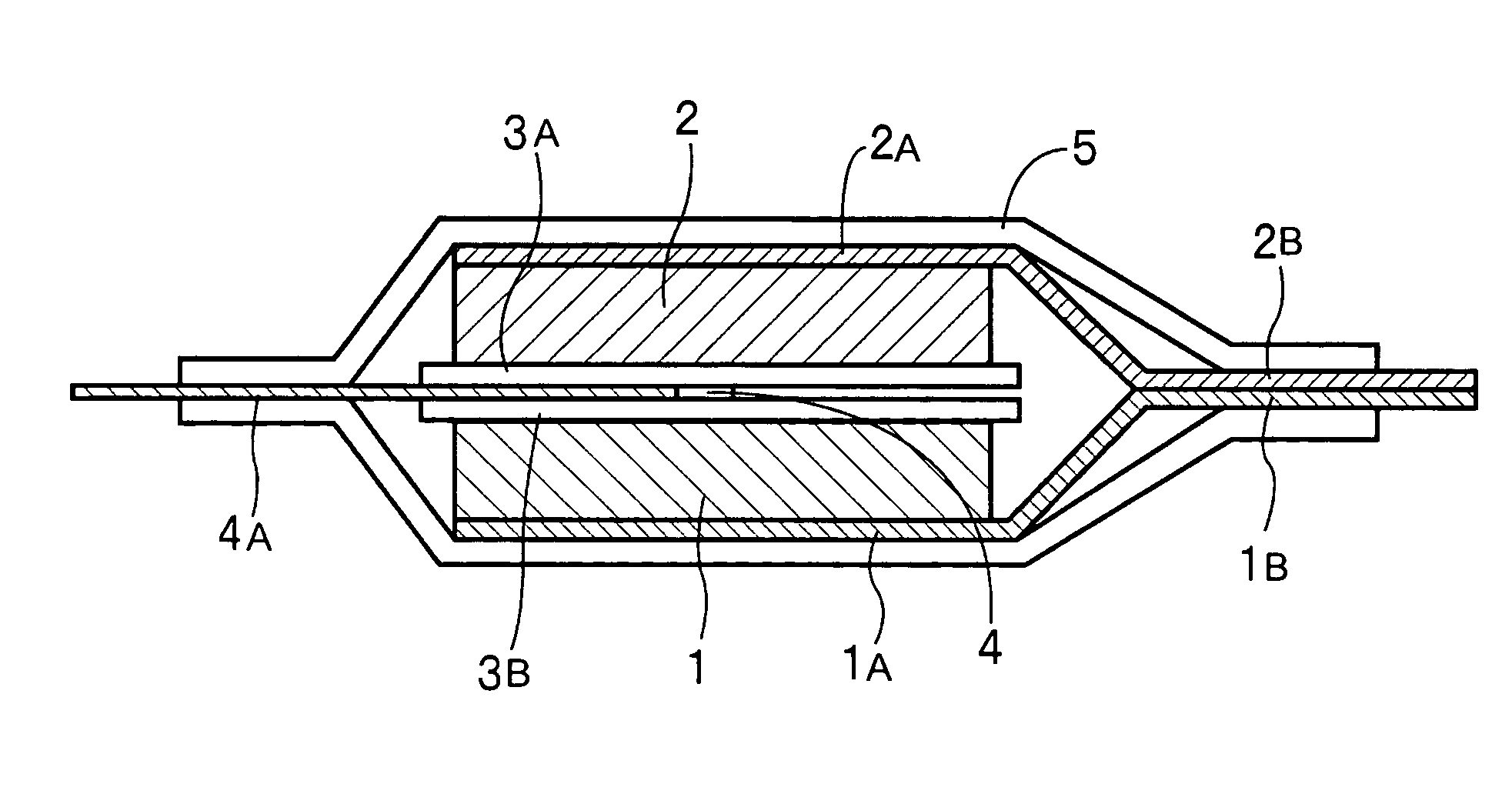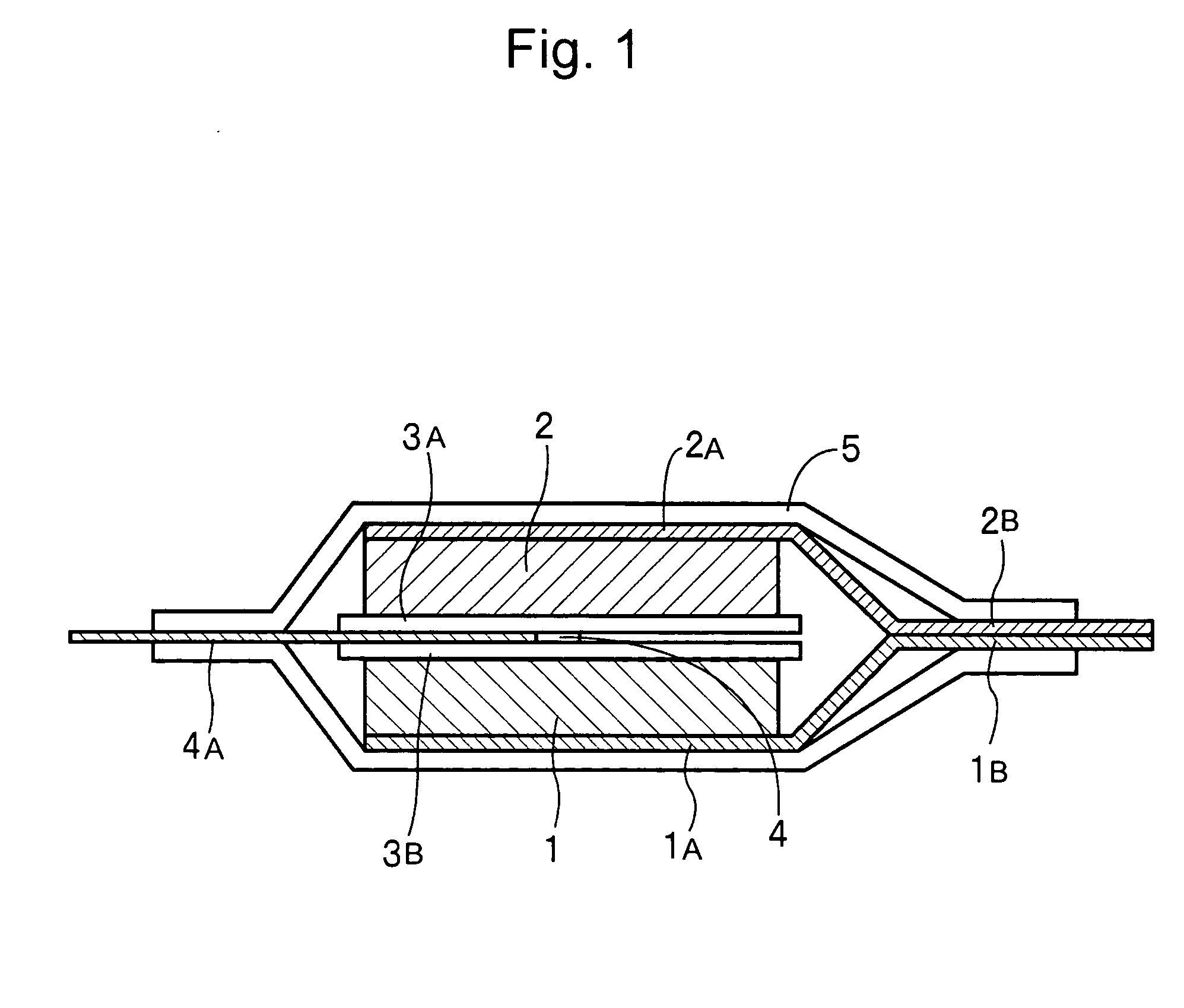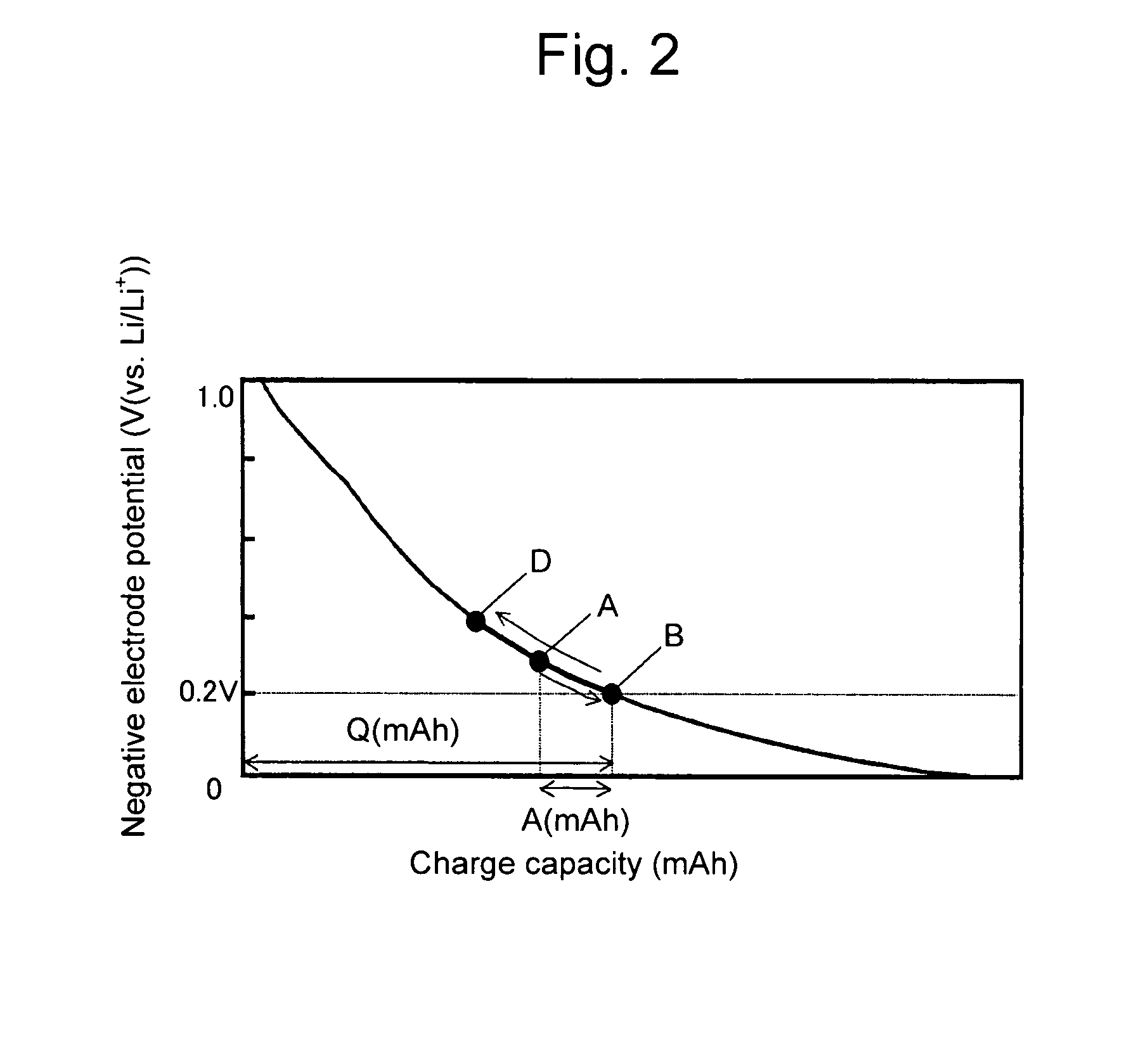Capacitor
- Summary
- Abstract
- Description
- Claims
- Application Information
AI Technical Summary
Benefits of technology
Problems solved by technology
Method used
Image
Examples
examples 4 to 6
[0056]In Example 2 described above, the capacity at the time when lithium was extracted until the negative electrode potential was changed from 0.20 V (vs. Li / Li+) to 1.5 V (vs. Li / Li+) was 2.20 mAh. This is equivalent to the above-described negative electrode capacity Q. In Example 2, a ratio A / Q of the positive electrode capacity A to the negative electrode capacity Q was 0.19.
[0057]By increasing the thickness of the positive electrode, the capacity ratio A / Q was adjusted to 0.36 (Example 4), 0.50 (Example 5), or 0.55 (Example 6).
[0058][Preparation of Electrolyte]
[0059]The electrolyte was prepared by dissolving lithium hexafluorophosphate (LiPF6) in a mixed solvent of ethylene carbonate and diethyl carbonate having a volume ratio of 3:7 so as to achieve a LiPF6 concentration of 1 mol / liter.
[0060][Fabrication of Capacitor]
[0061]A polyolefin-based separator was inserted between the above-described positive and negative electrodes, which was then impregnated with the electrolyte and ...
PUM
| Property | Measurement | Unit |
|---|---|---|
| Time | aaaaa | aaaaa |
| Electric charge | aaaaa | aaaaa |
| Electric charge | aaaaa | aaaaa |
Abstract
Description
Claims
Application Information
 Login to View More
Login to View More - R&D
- Intellectual Property
- Life Sciences
- Materials
- Tech Scout
- Unparalleled Data Quality
- Higher Quality Content
- 60% Fewer Hallucinations
Browse by: Latest US Patents, China's latest patents, Technical Efficacy Thesaurus, Application Domain, Technology Topic, Popular Technical Reports.
© 2025 PatSnap. All rights reserved.Legal|Privacy policy|Modern Slavery Act Transparency Statement|Sitemap|About US| Contact US: help@patsnap.com



